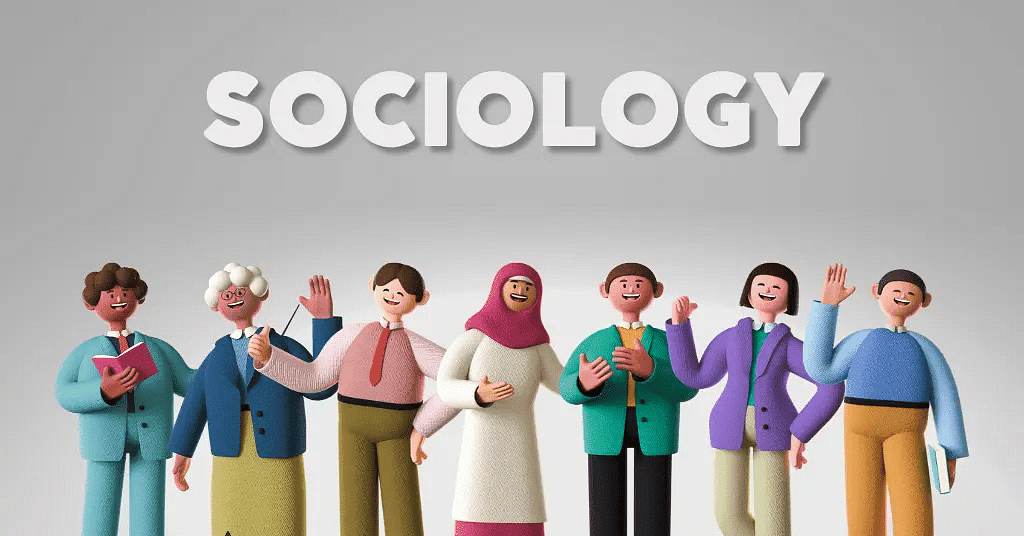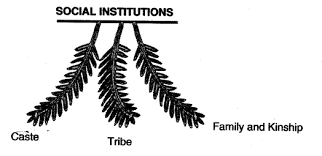Humanities/Arts Exam > Humanities/Arts Notes > Sociology Class 12 > Chapter Notes: Introducing Indian Society
Introducing Indian Society Chapter Notes | Sociology Class 12 - Humanities/Arts PDF Download
Introduction

Unique Nature of Sociology
- Sociology is unlike any other subject because everyone already knows something about society.
- Other subjects are taught explicitly, whereas knowledge about society is acquired naturally or automatically.
- Even young children understand social relationships, unlike subjects like History, Geography, Psychology, or Economics.
- Eighteen-year-olds already have substantial informal knowledge about society.
Advantages of Prior Knowledge
- Students are generally not afraid of Sociology.
- Sociology seems approachable because of existing familiarity.
Disadvantages of Prior Knowledge
- Learning Sociology requires “unlearning” existing common sense.
- Prior knowledge is shaped by our social group and environment.
- Common sense is partial – both incomplete and biased.
- Our views are tilted towards our social group's viewpoints and interests.
Self-Reflexivity in Sociology
- Sociology teaches ‘self-reflexivity’ – viewing oneself ‘from the outside’.
- Self-reflexivity involves critical self-inspection.
Social Mapping

- A social map locates individuals based on identities like age, regional or linguistic community, economic class, religious community, caste, or tribe.
- These identities place individuals within a web of social relationships.
- Sociology explains the types of groups in society, their relationships to each other, and what this means for your own life.
Connecting Personal Troubles and Social Issues
- Sociology maps links between “personal troubles” and “social issues” (C. Wright Mills).
- Personal troubles are individual concerns, while social issues affect large groups.
Purpose of the Book
- Introduces Indian society from a sociological perspective.
- Highlights the processes shaping Indian society, moving beyond common sense views.
Question for Chapter Notes: Introducing Indian SocietyTry yourself: Which term describes the process of viewing oneself critically from an external perspective in Sociology?View Solution
A Preview of this Book
Introduction to Indian Society
- First textbook introduces the basic structure of Indian society.
- Second textbook focuses on social change and development in India.
Demographic Structure (Chapter 2)
- India is the second most populous country and is projected to overtake China.
- Sociologists and demographers study population aspects that are socially significant.
- Questions addressed include whether the population is an obstacle or aids development.
Institutions of Caste, Tribe, and Family (Chapter 3)

- Caste: Unique to the Indian subcontinent, has attracted scholarly attention. Examines how caste has changed over centuries and its current meaning.
- Tribe: Explores the concept, types of communities defined as tribes, and how they define themselves in contemporary India.
- Family: Examines the changes in diverse family forms in India due to rapid social change.
Market and Socio-Cultural Dimensions (Chapter 4)
- Market: A powerful institution driving change throughout history.
- Focuses on economic changes brought by colonialism and developmental policies.
- Examines the evolution of different kinds of markets in India and their impacts.
Inequality and Exclusion (Chapter 5)
- Examines inequality and exclusion in the context of caste, tribe, gender, and disability.
- Caste: Analyzes state and oppressed caste efforts to reform or abolish the caste system, and the success of movements resisting caste exclusion.
- Tribe: Looks at tribal movements, their problems, and the reassertion of tribal identities.
- Gender: Addresses the impact of the women’s movement on social institutions.
- Disabled: Investigates society's responsiveness to the needs of the disabled.
Challenges of Diversity (Chapter 6)
- Explores the immense diversity of Indian society and its challenges.
- Encourages stepping outside familiar thinking about unity in diversity.
- Examines India's strengths and weaknesses in managing diversity.
- Discusses how young adults can address communal conflict, regional or linguistic chauvinism, and casteism.
- Stresses the importance of minorities feeling secure for the nation's future.
Practical Component (Chapter 7)
- Provides suggestions for practical activities related to the course.
- Emphasizes that the practical component can be interesting and enjoyable.
Question for Chapter Notes: Introducing Indian SocietyTry yourself: What is the concept that involves viewing oneself critically from an external perspective?View Solution
The document Introducing Indian Society Chapter Notes | Sociology Class 12 - Humanities/Arts is a part of the Humanities/Arts Course Sociology Class 12.
All you need of Humanities/Arts at this link: Humanities/Arts
|
62 videos|157 docs|25 tests
|
FAQs on Introducing Indian Society Chapter Notes - Sociology Class 12 - Humanities/Arts
| 1. What are the key concepts discussed in the chapter notes of Introducing Indian Society Humanities/Arts? |  |
Ans. The key concepts discussed in the chapter notes include the social structure of Indian society, cultural diversity, religious practices, and the impact of globalization on Indian society.
| 2. How does the chapter notes introduce the reader to the various aspects of Indian society? |  |
Ans. The chapter notes provide a comprehensive overview of Indian society by discussing its historical background, social organization, cultural traditions, and contemporary challenges.
| 3. What role do humanities and arts play in shaping Indian society according to the chapter notes? |  |
Ans. The chapter notes highlight the importance of humanities and arts in preserving and promoting Indian cultural heritage, fostering creativity, and promoting social cohesion.
| 4. How does the chapter notes address the issue of cultural diversity in Indian society? |  |
Ans. The chapter notes discuss the rich cultural diversity of India, including its languages, religions, traditions, and customs, and emphasize the need to respect and celebrate this diversity.
| 5. How does the chapter notes explore the impact of globalization on Indian society? |  |
Ans. The chapter notes examine how globalization has influenced various aspects of Indian society, such as economy, culture, technology, and communication, and discuss the challenges and opportunities it presents for Indian society.
Related Searches
















